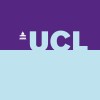
PET MRI in Coronary Artery Disease
Coronary Artery DiseaseThis study will assess the use of position emission tomography/magnetic resonance imaging (PET/MRI) using ultra-small-superparamagnetic particles of iron oxide (USPIO) as a contrast agent in patients with coronary artery disease.

Rise Semi Compliant Balloon Study in Patient With CAD
Coronary Artery DiseaseSingle arm, prospective, multi-center, trial designed to enrol approximately 66 patients. All patients will undergo PCI using at least one RISE SC balloon as per routine clinical practice and will be followed until discharge for data collection. Patients will be enrolled in up to 5 investigational sites in Switzerland. The patients will be followed up until discharge or until 7 days, whichever comes first.

Characterization of Different Phenotypes of Microvascular Dysfunction and Their Impact on Angina...
Angina CCS Classe II-IV - IMRRFR1 moreThe aim of the present study will be to identify different phenotypes of microvascular dysfunction and their associations with the severity of anginal symptoms assessed through the Seattle Angina Questionnaire(SAQ-7).

Early Results Of Coronary Artery Reconstruction For Extensive Coronary Disease
Coronary ReconstructionEvaluation of early outcome obtained from coronary reconstruction with or without endarterectomy in extensive diseased coronary arteries

Culprit-first in Primary Percutaneous Coronary Intervention
Coronary Artery DiseaseIschemic Heart Disease3 moreThe aim of this study is to assess the impact of culprit-first versus culprit-last percutaneous coronary intervention on the door to balloon time and clinical outcomes in patients with ST-elevation myocardial infarction.

Outcomes of Surgically Ineligible Patients With Multivessel CAD
Coronary Artery DiseaseThe OPTIMUM registry is a minimal risk observational study that uses a prospective cohort design to follow patients who have multivessel or left main coronary artery disease ("surgical anatomy" according to ACC/AHA Appropriateness Criteria for PCI12) and are deemed ineligible for coronary artery bypass surgery. It is anticipated that 20 sites will be selected to participate in the registry from a national network of leading centers across the United States with recognized expertise in both complex PCI and coronary artery bypass surgery. We will invite leading cardiac centers, as defined by US News and World reports rankings for heart care. Additional sites may be added to meet the target enrollment goal.

Assessment of Hemodynamic Response During Intubation Between Rigid Laryngoscopy and Track Light...
Coronary Disease Undergoing CABGOpioids provide greater patient comfort during intubation, but are not able to abolish completely the release adrenergic hormones during the laryngoscopy, which may cause undesirable hemodynamic changes. In this study the investigators selected two techniques commonly used for intubation, laryngoscopy and track light, so the investigators can verify which intubation techniques provides less hemodynamic changes in coronary patients under standard anesthesia induction.

Impact of Intensive Exercise Training on Coronary Collateral Circulation in Patients With Stable...
Stable Coronary Artery DiseaseExercise training in patients with coronary artery disease is able to correct several risk factors. Furthermore endothelial function can be improved. There are some hinds for improved collateral circulation after exercise training, nevertheless there is no study showing significant improvement/ increase in coronary collaterals. This might be due to technique of collateral measurement. Therefore we conduct a study were coronary blod flow before and after 4 weeks of exercise training were measured.

Effect of Remote Ischaemic Preconditioning on Clinical Outcomes in CABG Surgery
Coronary Heart DiseaseCoronary heart disease (CHD) is the leading cause of death in the UK, accounting for 124,000 deaths (2006) and costing the UK economy over £7.9 billion a year. Patients with severe CHD are usually treated by coronary artery bypass graft (CABG) surgery, the risks of which are increasing due to older and sicker patients being operated on. New treatment strategies are therefore required to improve health outcomes in these high-risk patients undergoing CABG with or without valve (CABG±valve) surgery. The hypothesis tested in this research proposal is that remote ischaemic preconditioning (RIC), a virtually cost-free, non-pharmacological and simple non-invasive strategy for reducing the damage to the heart muscle at the time of surgery, improves health outcomes in high-risk patients undergoing CABG±valve surgery. In this research project, 1610 high-risk patients undergoing CABG±valve surgery will be recruited via 28 UK hospitals performing heart surgery. Patients will be randomly allocated to receive either RIC or control. For RIC, a blood pressure cuff will be placed on the upper arm to temporarily deprive it of oxygen and nutrients, an intervention which has been shown in the investigators pilot studies to reduce damage to the heart muscle by up to 40% during CABG±valve surgery. The investigators will determine whether RIC can improve health outcomes in terms of better patient survival, less heart attacks and strokes, shorter hospital stay; less damage to the heart, kidney and brain during surgery; better heart function post-surgery and less chance of developing heart failure; better exercise tolerance and quality of life.

Prevention of Coronary Heart Disease in Morbidly Obese Patients
Morbid ObesityHypertension3 moreThe changes in risks of developing coronary heart disease in patients with morbid obesity after different weight loss interventions have not been extensively studied. The primary objective of this study is to investigate whether an intensive lifestyle intervention program in a tertiary care clinic (Spesialsykehuset for Rehabilitering) is comparable with a 7-week low-energy-diet followed by bariatric surgery in decreasing the risk of cardiovascular disease in these patients.
